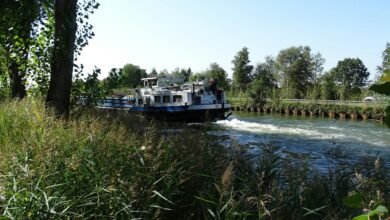Comprehensive Utilization Study 8332316512, 8332678836, 8332990168, 8333110847, 8333801848, 8334172665

The Comprehensive Utilization Study 8332316512, 8332678836, 8332990168, 8333110847, 8333801848, and 8334172665 provides a detailed examination of resource deployment patterns across various sectors. This analytical approach highlights existing efficiency gaps and proposes sustainable strategies for improvement. By evaluating operational performance through specific metrics, organizations can make informed decisions. However, the implications of these findings extend beyond mere efficiency, prompting a closer look at long-term environmental and economic impacts.
Analysis of Resource Deployment Patterns
Although resource deployment patterns can vary significantly across different sectors, a comprehensive analysis reveals common trends that impact overall efficiency and effectiveness.
Resource allocation strategies often reflect deployment trends that prioritize flexibility and responsiveness. Organizations that adopt adaptive resource management techniques typically experience enhanced operational performance, enabling them to maximize their potential while maintaining the freedom to pivot in response to changing demands and environments.
Identifying Efficiency Gaps
How can organizations effectively pinpoint areas where efficiency lags?
By employing efficiency metrics alongside conducting a thorough gap analysis, they can identify discrepancies between current performance and optimal outcomes.
This analytical approach allows organizations to uncover specific inefficiencies within their processes, facilitating informed decision-making.
Ultimately, recognizing these gaps promotes a culture of continuous improvement and empowers teams to enhance operational performance.
Recommendations for Sustainable Strategies
Identifying efficiency gaps provides a foundation for organizations to implement sustainable strategies that enhance overall performance.
Prioritizing renewable energy sources can significantly reduce reliance on fossil fuels, while adopting waste reduction practices fosters a circular economy.
These dual approaches not only improve environmental impact but also promote cost savings and operational resilience, ultimately supporting a more sustainable future aligned with the principles of freedom and responsibility.
Conclusion
In conclusion, the Comprehensive Utilization Study presents a thorough analysis of resource deployment across various sectors, revealing critical efficiency gaps that organizations may overlook. While some may argue that addressing these gaps requires significant upfront investment, the study underscores that the long-term benefits—increased operational performance and enhanced sustainability—far outweigh initial costs. By embracing the recommended strategies, organizations can foster a culture of continuous improvement, ultimately driving both economic growth and environmental stewardship.



